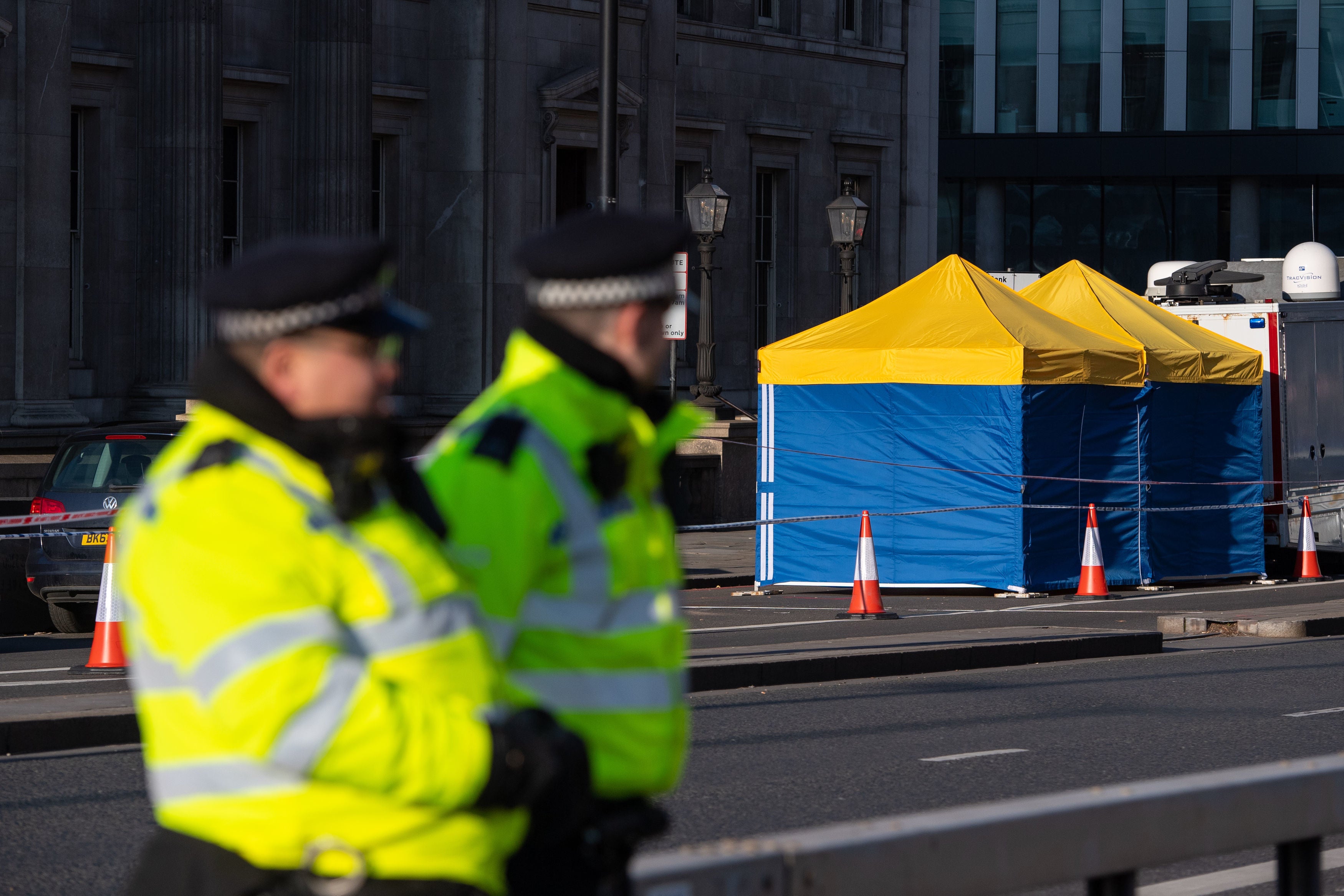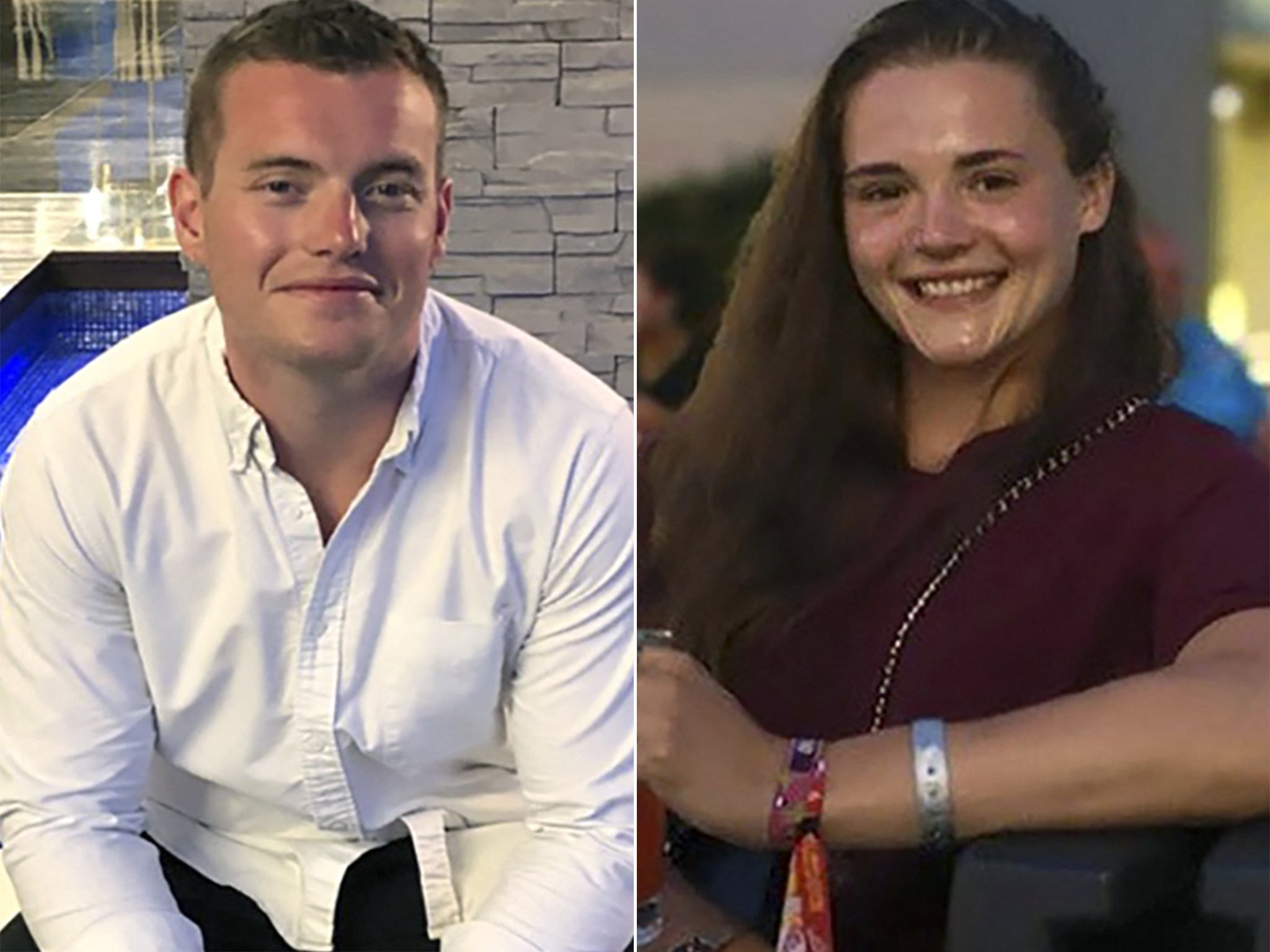Fishmongers’ Hall attack inquest: Terrorist was lawfully killed by police, inquest finds
Usman Khan was wearing a ‘realistic-looking’ suicide vest and told police he had a bomb before being shot

Your support helps us to tell the story
From reproductive rights to climate change to Big Tech, The Independent is on the ground when the story is developing. Whether it's investigating the financials of Elon Musk's pro-Trump PAC or producing our latest documentary, 'The A Word', which shines a light on the American women fighting for reproductive rights, we know how important it is to parse out the facts from the messaging.
At such a critical moment in US history, we need reporters on the ground. Your donation allows us to keep sending journalists to speak to both sides of the story.
The Independent is trusted by Americans across the entire political spectrum. And unlike many other quality news outlets, we choose not to lock Americans out of our reporting and analysis with paywalls. We believe quality journalism should be available to everyone, paid for by those who can afford it.
Your support makes all the difference.A terrorist was lawfully killed by armed police after murdering two victims in a knife rampage, an inquest has found.
Usman Khan, 28, was chased onto London Bridge by two former prisoners and a civil servant after launching an attack at Fishmongers’ Hall in November 2019.
Khan told police he had a bomb when they arrived at the scene, and an armed officer shot him when he saw Khan was wearing a “very realistic-looking” suicide belt.
The terrorist shouted “Allahu akbar”, meaning “God is great”, during the confrontation.
The inquest into Khan’s death heard that he continued moving for several minutes after the initial shots, and more police officers opened fire in the belief he could detonate the bomb.
Twelve of the 20 shots fired hit the terrorist, who was pronounced dead at the scene.
Isis claimed responsibility for the attack and called Khan its “soldier”, but the terrorist group provided no evidence and MI5 told the inquest there was “nothing to support” the claim.
Giving their verdict on Thursday, jurors said Khan was not complying with police officers’ instructions to stay still before he was shot.
They concluded that the first police officer who opened fire, codenamed YX99, had seen “what he perceived as a viable IED on Khan” and acted to protect the public.
Jurors said that other police shot Khan when he continued moving, because they believed he was trying to find a trigger with his hands.
They found that when the final volley of shots were fired, Khan had sat upright in what officers “interpreted as a move to detonate the device”.

Separate inquests that were previously held into Khan’s victims’ deaths concluded that “omissions and failures” by security services and authorities who were managing the terrorist following his release from prison contributed to the attack.
At the time, he was being monitored by MI5, counter-terror police, probation services and a multi-agency public protection panel, but none spotted his preparations for the attack.
Khan murdered Jack Merritt, 25, and Saskia Jones, 23, at a prison rehabilitation event that he attended as an alumni of Cambridge University’s Learning Together programme.
He had joined the scheme in the high-security HMP Whitemoor jail, where he was serving a sentence for attempting to set up a terrorist training camp in Pakistan.
Khan launched the attack 11 months after his release from prison, and just minutes after telling the event that Learning Together had helped him.
He attacked Mr Merritt in a bathroom, where the terrorist had been making final preparations, then stabbed Ms Jones in an adjoining cloakroom and attacked several other people who survived.
Fellow attendees and staff fought Khan using makeshift weapons including a narwhal tusk, pike and fire extinguisher, and chased him outside onto London Bridge.
The inquest into his death heard that one of the first police officers on the scene opened fire after seeing Khan’s fake suicide vest, which was initially believed to be real.
The terrorist was initially shot twice, but continued moving for another eight minutes, and several police officers opened fire fearing he would get up or detonate the device.
Two shots were fired at 2.02pm but Khan continued to move around on the floor until 2.10pm, at which point a further 18 shots were fired. He managed to sit upright briefly before losing consciousness.
Armed police officers previously told the inquest of their astonishment as Khan continued to move after being shot numerous times, with one recalling thinking: “Why aren't you dead?”

Some officers told the inquest they had attempted a “critical shot” to the head, but believed they missed.
A pathologist said 12 of the 20 shots fired by armed officers hit Khan, but only three were fatal.
A post-mortem also found several blunt force trauma injuries from where Khan was jabbed with the narwhal tusk, punched and hit, but they did not contribute to his death.
Neil Basu, the head of UK counter-terror policing, said both the unarmed and armed officers who responded to the attack showed “extraordinary bravery and courage”.
“Officers were aware they were well within the blast zone, but they did not retreat and they were joined by other colleagues; all knowingly putting their own lives at risk to confront the threat posed by the attacker,” he added.
“Quite simply, their actions on that day were nothing short of heroic.”
Mr Basu repeated his apology for “unacceptable” failures in the run-up to the attack and said practices had changed.
The coroner, Mark Lucraft QC, will be writing a prevention of future deaths report that will consider what should change as a result of the attack.
Subscribe to Independent Premium to bookmark this article
Want to bookmark your favourite articles and stories to read or reference later? Start your Independent Premium subscription today.




